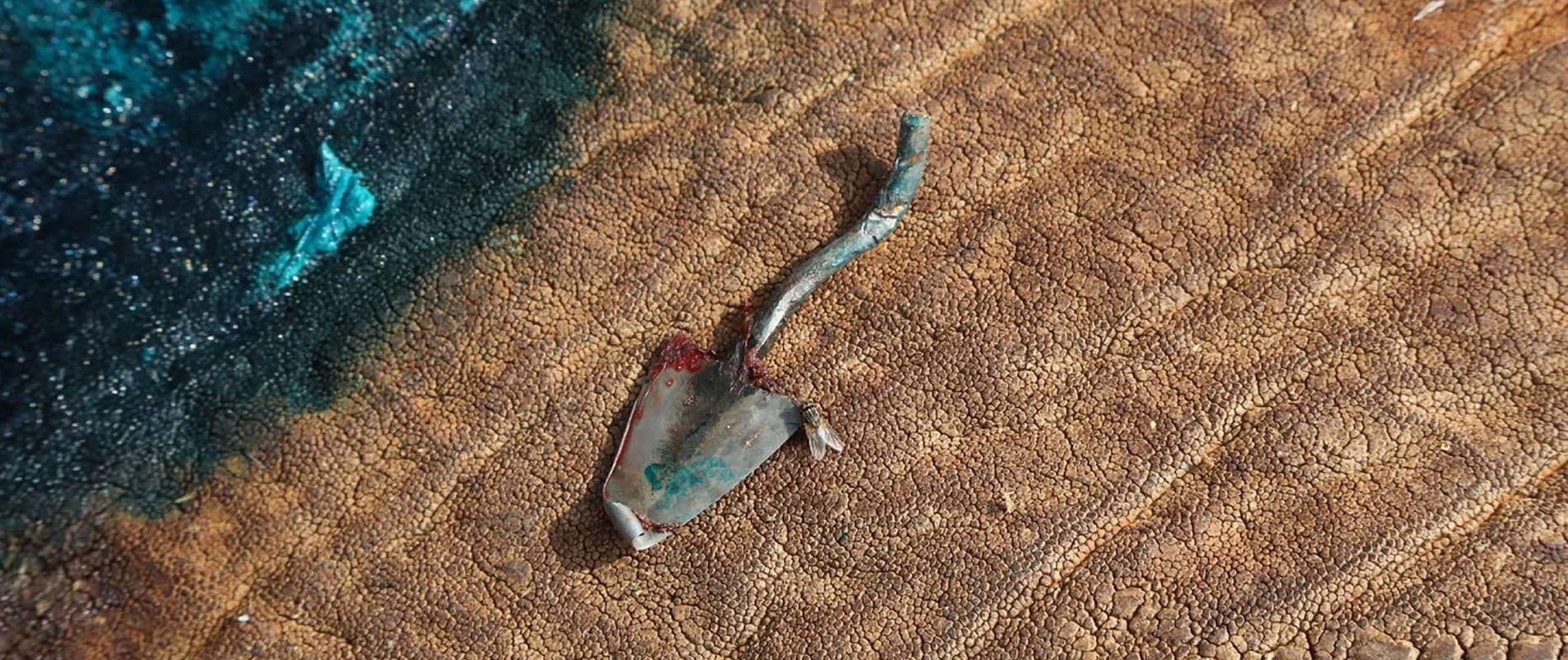FIELD VETERINARY REPORT FOR TSAVO MOBILE VET UNIT FOR THE MONTH OF JULY 2016 Reported by Dr Jeremiah Poghon In the month of July several cases were handled though there was a decrease in number of cases compared to the previous month
FIELD VETERINARY REPORT FOR TSAVO MOBILE VET UNIT FOR THE MONTH OF JULY 2016
Reported by Dr Jeremiah Poghon
In the month of July several cases were handled though there was a decrease in number of cases compared to the previous month. Cases included treatment of an elephant orphan with an arrow wound at the Ithumba stockade and two elephants with arrow wounds in Tsavo East as well as a lion and buffalo treatment. The unit also collared two male problematic lions in Kuku ranch for human wildlife conflict control. The Tsavo ecosystem remains dry and cases are expected to remain high as animals venture far in search for water and forage.
CASE #1 RESCUE OF AN ELEPHANT CALF
Date: 1st July 2016
Species: Elephant
Sex: Unknown
Age: Female
Location: Dida Harea, Tsavo East National Park
History and rescue operation
Visitors reported an elephant calf wandering alone with no family nearby. The vet team together with the Voi stockade team rushed to the location to find the calf with no mother or any other herd within. The tiny calf was rescued and taken to the stockade where it was fed on milk before being airlifted to Nairobi.
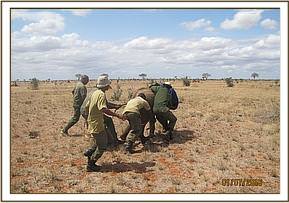
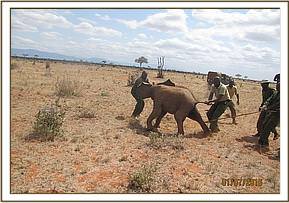
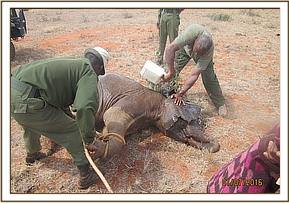

CASE#2 LION COLLARING EXERCISE IN KUKU RANCH
Date of intervention: 2nd to 6th July
Animal: Lion
Sex: Male
Age: Adults x 2
Location: Kuku ranch
Kuku ranch is a community conservation area bordering Tsavo West National Park and Chyulu National Park. Human predator conflict is high in the mainly pastoralist community that keep livestock as their main economic activity. There is an increase in livestock predation by carnivores in the ranch creating hostilities with the community. Discussion between the park warden, community representatives and the unit resolved to collar the problematic lions for easy monitoring and assist in conflict mitigation.
Immobilization and collaring
The lions were immobilized using 300 mgs of Ketamine and 4 mgs of Meditomidine Hcl after responding to a calling station near one of the hotspots aided by night vision equipment. The collars were fitted with enough space to allow the lions to feed and move with ease. The lions were revived one and half hours later using 2.5 mgs Atipemazole Hcl and monitored until he moved away on his own. Further follow up reports indicate they are doing well with the satellite component sending signals.


CASE#3 TREATMENT OF AN ELEPHANT ORPHAN
Date: 7th July
Animal: Elephant
Sex: Male
Age: Young adult
Location: Ithumba, Tsavo East
History
This elephant orphan, Makireti, returned to Ithumba stockade with an arrow head stuck in her left rib cage with blood oozing out. The Vet was airlifted by DSWT aircraft to the area to find the elephant inside the enclosure with others.
mmobilization, examination and treatment
A dan-inject dart was prepared and filled with 10 mgs of Etorphine. She was easily darted inside the stockade and moved a short distance before going down on the right side just outside the stockade enclosure.
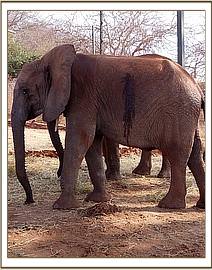

The arrow head was loosened and removed. The wound was washed with water mixed with Hydrogen peroxide before tincture of iodine was applied and then sprayed with Oxytetracycline spray and covered with green clay. Long acting antibiotics and anti-inflammatory drugs were administered parenterally. He woke up gently as his group milled around him in support.


Prognosis
Prognosis is good
CASE#4 TREATMENT OF AN ELEPHANT BULL WITH AN ARROW INJURY
Date: 22nd July
Species: Elephant
Sex: Male
Age: Bull
Location: Kaluku, Tsavo east
History
An elephant bull was reported injured by DSWT Kaluku team after being spotted by an aerial patrol plane. The vet team rushed to the area to find the bull with another bull and a family of nearly 30 elephants nearby. The Vet team drove to the area and the DSWT helicopter was brought in and helped spot and dart of the elephant.
Immobilization, examination and treatment
The elephant was immobilized using 18 mgs of Etorphine in a dan-inject dart using the dan-inject system from the helicopter. He was darted in the rump and went down after 9 minutes.There was a penetrating wound on the back that had started to heal. The wound was enlarged and an arrow head retrieved from the injury.


The necrotic tissues were cut off and the wound cleaned using water mixed with Hydrogen peroxide and tincture of iodine.
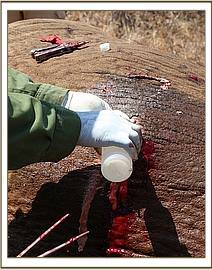
An intravenous administration of 50 cc Dexamethasone Hcl was given through the ear vein and 100 cc of long acting Amoxicillin injected intramuscularly.
Reversal
The anesthesia reversal was done by administration of Diprenorphine Hcl at three times the Etorphine dose. The bull woke up and moved away slowly.
Prognosis
Prognosis is good.
CASE#5 TREATMENT OF AN INJURED BUFFALO
Date: 25th July
Species: Buffalo
Sex: Male
Age: Adult
Location: Maungu, Tsavo east
History
An injured buffalo bull was reported by KWS rangers manning the southern part of Tsavo East National Park near Maungu trading centre. The vet unit rushed in to find the injured and bleeding buffalo alone nearby. Fresh injuries on the back at the lumbo-sacral area were evident from the bleeding.
Immobilization, examination and treatment
Immobilization was acheived using 7 mgs of Etorphine mixed with 60 mgs of Xylazine. The Buffalo went down in 5 minutes. There were multiple bite and scratch wounds suspected to have been caused by a lion attack on the lumbar-sacral and perineal region with hemorrhage.
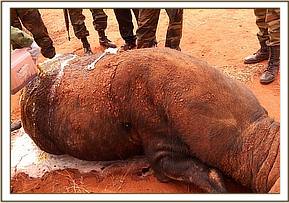

The wounds were washed clean and splashed with iodine. Oxytetracycline spray was applied and a final cover of green clay used to cover the wound. Long acting Amoxicillin and dexamethasone Hcl were administered parenterally.


Reversal
He was revived using 24 mgs of Diprenorphine Hcl mixed with 2.5 mgs of Atipemazole Hcl. The Buffalo woke up and moved away shortly.
Prognosis
Prognosis is guarded.
CASE#6 TREATMENT OF A SNARED LION
Date: 25th July
Animal: African lion
Species: Panthera leo
Sex: Male
Age: Sub Adult
Location: Galana conservancy, Tsavo east
History
The lion was reported to be in a pride of three with a tight tissue cutting wire snare around the waist. The vet team rushed in to find the young lion with its mother and siblings resting on the banks of Galana River.
Immobilization, examination and treatment
A dart containing 300 mgs of Ketamine and 4 mgs of Meditomidine was prepared to immobilize the lion. It took about 5 minutes for the lion to be fully immobilized and a vehicle was used to push the pride away. He was moved to a shady area and the tight snare around the abdominal area was removed.
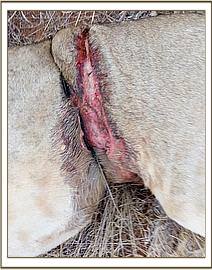

The resultant gaping wound cut through the skin and muscles but did not perforate the peritoneal cavity. The wounds were cleaned and sutured with about 20 interrupted nylon sutures with drainage gaps left open. Iodine was applied before the area was spray with Oxytetracycline. Green clay was used to cover the sutured area to aid in healing and keep dirt out of the wound. 15 cc of long acting Amoxicillin and Dexamethasone was administered parenterally.
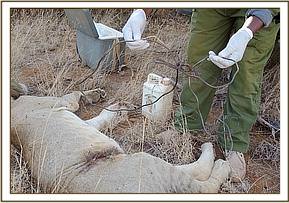

Reversal
The operation took 1 ½ hours and the lion was revived using 2.5 mgs of Atipemazole. He woke up and was joined by the rest of the pride.
Prognosis
Prognosis is good.
CASE#7 EXAMINATION OF A BUFFALO CARCASS
Date: 27th July
Species: Buffalo
Sex: Male
Age: Adult
Location: Voi safari lodge, Tsavo east
History
An injured buffalo bull that was lying motionless near their dry water hole was reported by the Voi Safari Lodge staff. The team rushed in to find the recumbent buffalo bull motionless and stiff. Closer examination revealed that the bull was dead. Age approximation was done and most of the teeth were worn out due to advanced age. Deaths of very old and very young animals are usually experienced during the dry seasons as currently being experienced in the Tsavo ecosystem. Death was deemed natural due to old age.
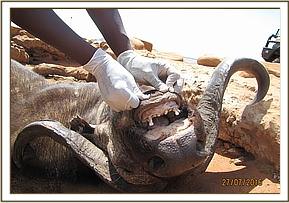
CASE#8 TREATMENT OF AN INJURED ELEPHANT COW
Date: 30th July
Species: Elephant
Sex: Female
Age: Adult
Location: Irima, Tsavo east National Park
History
This elephant cow was spotted in Irima area of Tsavo East by visitors touring the area with a wound on the back with blood and pus oozing from it. They notified the vet team who rushed to the area to find the elephant with another elephant cow and two calves.
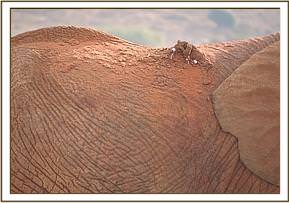

Immobilization, examination and treatment
The elephant was immobilized using 16 mgs of Etorphine in a dan-inject dart from a vehicle. She was darted in the rump and kept in the open and separated from the other elephants by the vehicle. She went down after 6 minutes on the left flank.
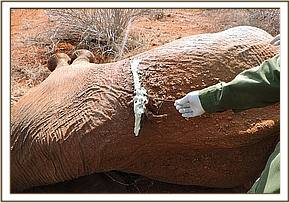

There was an arrow wound to the back near the spine with massive muscle destruction, pus and debris accumulation. The wound was probed and found to be deep. Dead tissues and pus were cleaned out using water mixed with Hydrogen peroxide. Tincture of iodine was applied and Oxytetracycline spray administered before a final cover of wetted green clay applied.
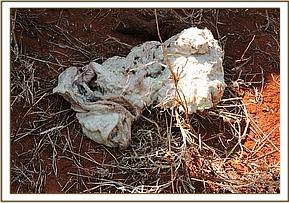

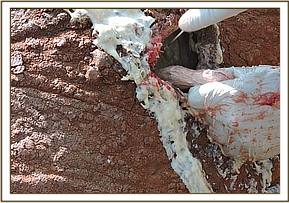

An intravenous administration of 50 cc Dexamethasone Hcl was given through the ear vein and 150 cc of long acting Amoxicillin injected intramuscularly.
Reversal
Drug reversal was done by administration of Diprenorphine Hcl at three times the Etorphine dose. The cow woke up and moved away slowly to join her herd.
Prognosis
Prognosis is good.
CASE#9 EXAMINATION OF A LAME ELEPHANT COW
Date: 31st July
Species: African Elephant
Sex: Female
Age: Young
Location: Sala gate, Tsavo East
History and examination
An elephant cow was reported lame and struggling to walk near Sala gate by tour drivers visiting Tsavo East. The vet unit rushed to the area to find the lone cow with her 2 year old calf under a tree. The injured right rear leg was deformed and shorter than the left giving an obvious abnormal gait and motion. The right knee joint was bigger than normal but no wound was observed. The elephant could use the leg but with difficulty due to the deformity.
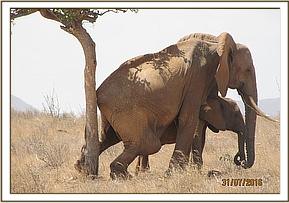
Conclusion was that the leg had a previous injury (old) that had long healed with limb deformity and no intervention can successful. The deformity is not life threatening hence good prognosis.
Acknowledgement
The unit would like to appreciate the support of its sponsors ViER PFOTEN through the David Sheldrick Wildlife Trust (DSWT) for their continued support. We also thank Kenya Wildlife Service through the Assistant director Tsavo conservation area and the head, veterinary and capture services department for their immense support to the unit.
